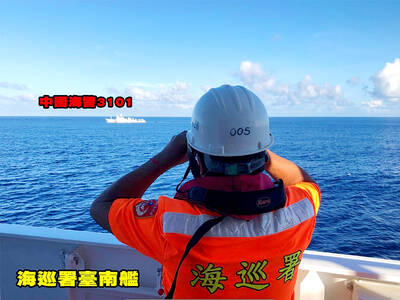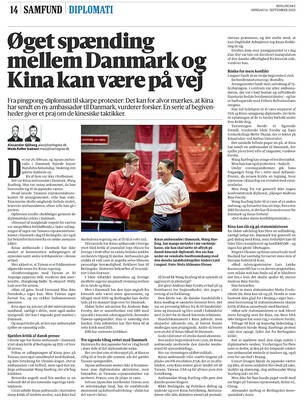iPASS e-wallet users are able to pay for various public transportation services across the nation starting yesterday by simply displaying an iPASS QR code on their regular banking apps.
Passengers are able to use the iPASS "TWQR" Travel Code on the Kaohsiung Metro, Kaohsiung Light Rail, Taichung Metro, New Taipei Metro and other bus, ferry and rail services, iPASS Corp said in a news release yesterday.
By opening a payment app on their mobile phone, selecting the QR, and scanning it at the ticket barrier reader, passengers can pay for transportation services directly from their iPASS accounts -- without needing physical cash, tickets, or cards.

Photo courtesy of iPass Corp
iPASS announced the new service at a press conference held at Formosa Boulevard Station in Kaohsiung yesterday.
Chen Yen-Liang (陳彥良), vice chairperson of Taiwan’s Financial Supervisory Commission, Wang Hong-rong (王宏榮), deputy secretary-general of the Kaohsiung City government, and other figures witnessed the launch event that was also broadcast online.
According to the company, the iPASS "TWQR" Travel Code was developed by the Financial Information Service Co, which integrated the QR Code Common Payment Standard with the Ministry of Transportation and Communication’s "Transportation Ticket Two-Dimensional Barcode Data Format Standard."
iPASS explained that the system connects the two main payment networks -- banks and electronic payment institutions -- via an "Electronic Payment Cross-Institution Shared Platform."
The first group of financial institutions to support the iPASS "TWQR" Travel Code are the Bank of Taiwan, Land Bank of Taiwan, Taiwan Cooperative Bank, First Bank, Hua Nan Bank, Chang Hwa Bank, Mega Bank, Taiwan Business Bank, and Chunghwa Post.
iPASS said the service officially began yesterday for customers of the nine financial institutions, with plans to expand nationwide to include more transport networks.
To encourage people to try out the new service, the nine participating financial institutions will offer 100 percent rebate on fares paid with the iPASS "TWQR" Travel Code from April 15 to Dec. 31 this year.

The Coast Guard Administration (CGA) yesterday said it had deployed patrol vessels to expel a China Coast Guard ship and a Chinese fishing boat near Pratas Island (Dongsha Island, 東沙群島) in the South China Sea. The China Coast Guard vessel was 28 nautical miles (52km) northeast of Pratas at 6:15am on Thursday, approaching the island’s restricted waters, which extend 24 nautical miles from its shoreline, the CGA’s Dongsha-Nansha Branch said in a statement. The Tainan, a 2,000-tonne cutter, was deployed by the CGA to shadow the Chinese ship, which left the area at 2:39pm on Friday, the statement said. At 6:31pm on Friday,

The Chinese People’s Liberation Army Navy’s (PLAN) third aircraft carrier, the Fujian, would pose a steep challenge to Taiwan’s ability to defend itself against a full-scale invasion, a defense expert said yesterday. Institute of National Defense and Security Research analyst Chieh Chung (揭仲) made the comment hours after the PLAN confirmed the carrier recently passed through the Taiwan Strait to conduct “scientific research tests and training missions” in the South China Sea. China has two carriers in operation — the Liaoning and the Shandong — with the Fujian undergoing sea trials. Although the PLAN needs time to train the Fujian’s air wing and

The American Institute in Taiwan (AIT) put Taiwan in danger, Ma Ying-jeou Foundation director Hsiao Hsu-tsen (蕭旭岑) said yesterday, hours after the de facto US embassy said that Beijing had misinterpreted World War II-era documents to isolate Taiwan. The AIT’s comments harmed the Republic of China’s (ROC) national interests and contradicted a part of the “six assurances” stipulating that the US would not change its official position on Taiwan’s sovereignty, Hsiao said. The “six assurances,” which were given by then-US president Ronald Reagan to Taiwan in 1982, say that Washington would not set a date for ending arm sales to Taiwan, consult

A Taiwanese academic yesterday said that Chinese Ambassador to Denmark Wang Xuefeng (王雪峰) disrespected Denmark and Japan when he earlier this year allegedly asked Japan’s embassy to make Taiwan’s representatives leave an event in Copenhagen. The Danish-language Berlingske on Sunday reported the incident in an article with the headline “The emperor’s birthday ended in drama in Copenhagen: More conflict may be on the way between Denmark and China.” It said that on Feb. 26, the Japanese embassy in Denmark held an event for Japanese Emperor Naruhito’s birthday, with about 200 guests in attendance, including representatives from Taiwan. After addressing the Japanese hosts, Wang